Match the element in Column I with the properties mentioned in Column II

The correct Answer is:b
(A)-(p),(r),(B)-(p),(s),(C)-(q),(r),(D)-(s)
Topper's Solved these Questions
- S-BLOCK ELEMENTS ( ALKALI AND ALKALINE EARTH METALS ) BOOK - MODERN PUBLICATIONCHAPTER - S-BLOCK ELEMENTS ( ALKALI AND ALKALINE EARTH METALS ) EXERCISE - UNIT PRACTICE TEST
13 Videos
- S-BLOCK ELEMENTS ( ALKALI AND ALKALINE EARTH METALS ) BOOK - MODERN PUBLICATIONCHAPTER - S-BLOCK ELEMENTS ( ALKALI AND ALKALINE EARTH METALS ) EXERCISE - COMPETITION FILE ( MULTIPLE CHOICE QUESTION (C))
11 Videos
- REDOX REACTIONS BOOK - MODERN PUBLICATIONCHAPTER - REDOX REACTIONS EXERCISE - COMPETITION FILE (Objective Questions) (C. MULTIPLE CHOICE QUESTIONS)
9 Videos
- SOME BASIC CONCEPTS OF CHEMISTRY BOOK - MODERN PUBLICATIONCHAPTER - SOME BASIC CONCEPTS OF CHEMISTRY EXERCISE - COMPETITION FILE (INTEGER TYPE AND NUMERICAL VALUE TYPE QUESTIONS)
10 Videos
Similar Questions
Each question contains statements given in two columns, which have to be matched. Statements in Column I are labelled as A, B, C and D whereas statements in Column II are labelled as p, q, r and s. Match the entries of Column I with appropriate entries of Column II. Each entry in Column I may have one or more than one correct option from Column II. The answers to these questions have to be appropriately bubbled as illustrated in the following example. If the correct matches are A-4, A-r, B-p, B-, C-r, C-s and D-q, then the correctly bubbled matrix will look like the following:
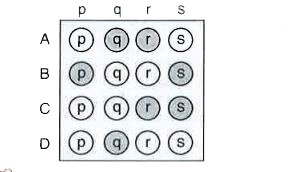
Match the element in column I with the property mentioned in column II
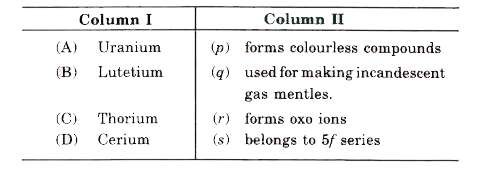
View SolutionMatch the elements given in Column I with the properties mentioned in Column II.
ColumnIColumnIIA.Li1.Insoluble sulphateB.Na2.Strongest monoacidic baseC.Ca3.Most negativeEΘvalue among alkali metalsD.Ba4.Insoluble oxalate5.6s2outer electronic configuration
View Solution
Knowledge Check
Each question contains statements given in two columns, which have to be matched. Statements in Column I are labelled as A, B, C and D whereas statements in Column II are labelled as p, q, r and s. Match the entries of Column I with appropriate entries of Column II. Each entry in Column I may have one or more than one correct option from Column II. The answers to these questions have to be appropriately bubbled as illustrated in the following example. If the correct matches are A-4, A-r, B-p, B-, C-r, C-s and D-q, then the correctly bubbled matrix will look like the following:
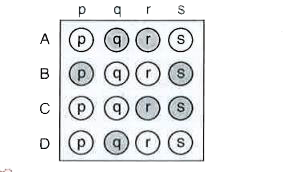
Match the element in column I with the property mentioned in column II
 A(q) , (s)B(p), (q)C(q), ( r)D(p),(q),(s)
A(q) , (s)B(p), (q)C(q), ( r)D(p),(q),(s)Match the complexes in Column I with their properties listed in Column II
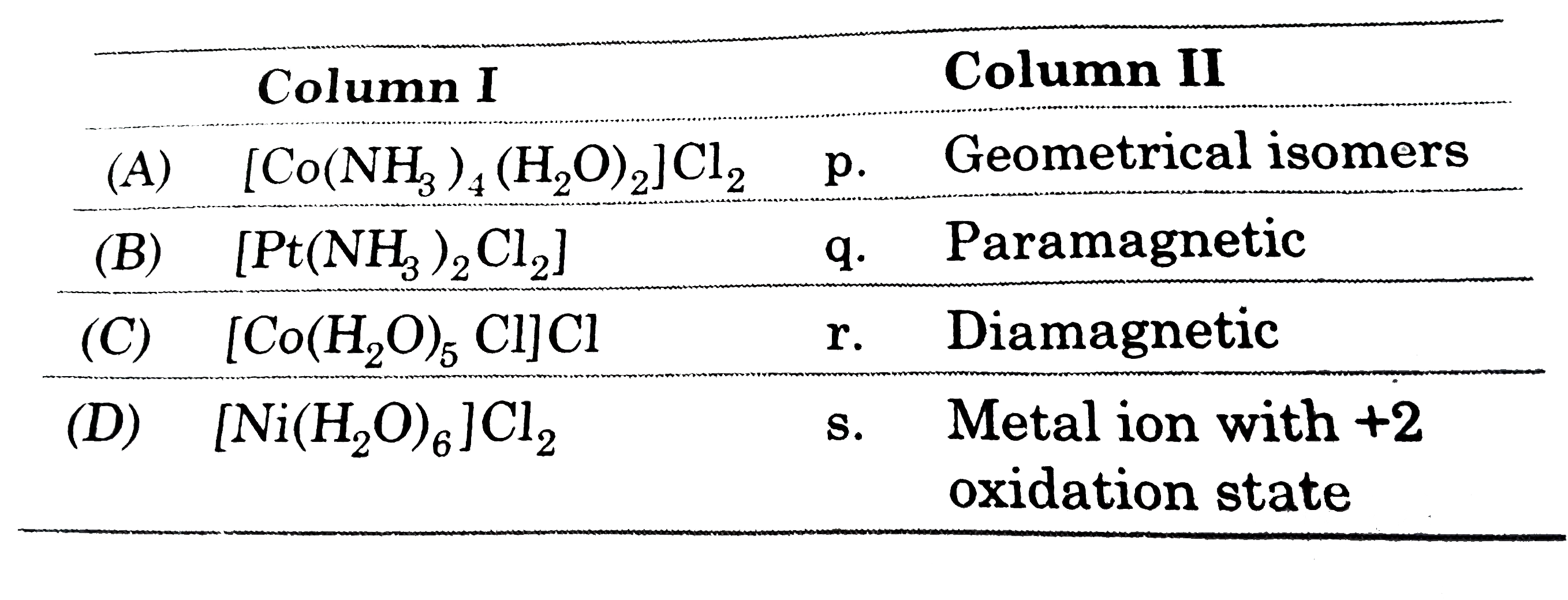 AABCD4231BABCD3142CABCD2134DABCD1342
AABCD4231BABCD3142CABCD2134DABCD1342Match the element in column I with methods of purification in columb II.
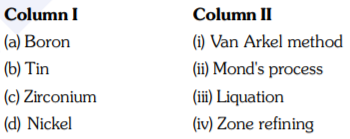
Identify the correct match:AA-iii B-iv C-i D-iiBA-iv B-iii C-i D-iiCA-iv B-iii C-ii D-iDA-ii B-i C-iv D-iii
Match the elements given in Column I with the properties mentioned in Column II.
ColumnIColumnIIA.Li1.Insoluble sulphateB.Na2.Strongest monoacidic baseC.Ca3.Most negativeEΘvalue among alkali metalsD.Ba4.Insoluble oxalate5.6s2outer electronic configuration
View SolutionMatch the elements given in column I with the properties mentioned in Column II.

View SolutionMathc the species given in Column I with the properties mentioned in Column II.

View SolutionMatch the statements in Column I with the properties in Column II. A
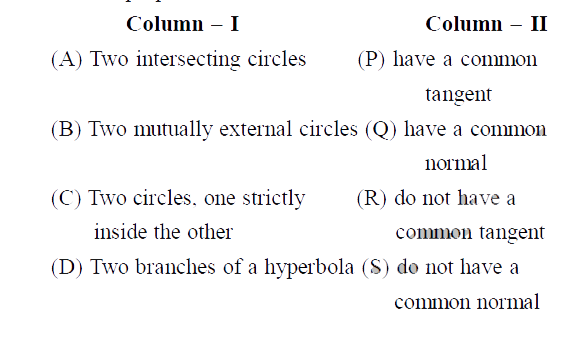
View SolutionMatch the complexes in Column-I with their properties listed in Column-II

View Solution
